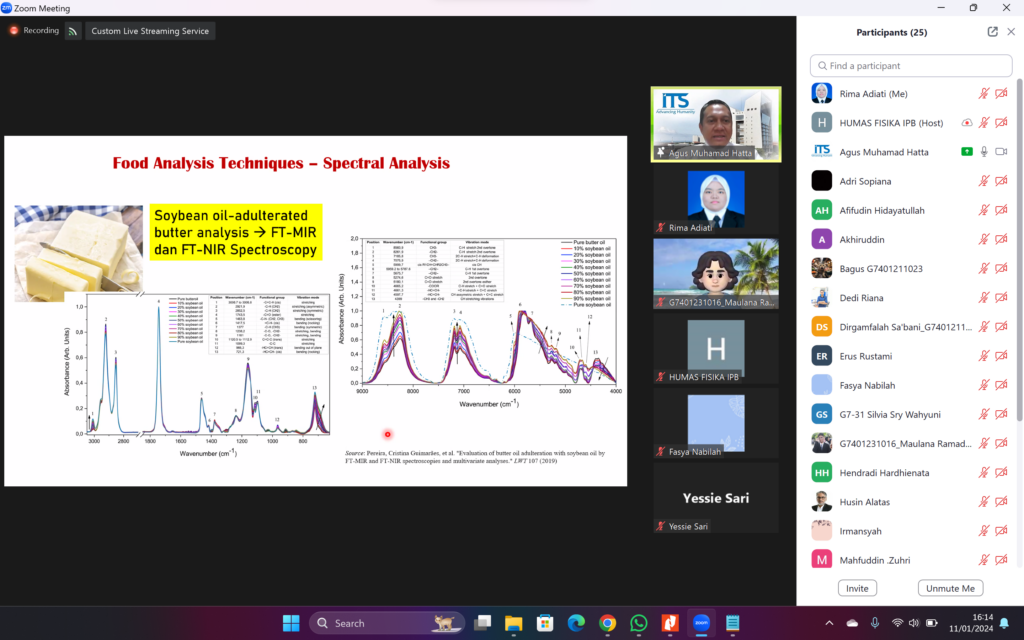
Inaugural Edition of Physics Talk 2024, IPB University Physics Department Invites Optics and Photonics Experts
Inaugural Edition of Physics Talk 2024, IPB University Physics Department Invites Optics and Photonics Experts
Department of Physics, Faculty of Mathematics and Natural Sciences (FMIPA) IPB University organised the inaugural IPB Physics Talk in 2024. This bi-weekly activity has reached the 57th series with the guest speaker this time being Dr Agus Muhamad Hatta from the Department of Engineering Physics, Institut Teknologi Sepuluh Nopember (ITS). The topic presented was Optical Sensing – Exploring Into Light Technologies.
Chairman of the Physics Department of IPB University, Prof Tony Sumaryada said, “This activity can initiate future collaboration opportunities between IPB University and ITS, especially because of the wide applications.”
Dr Irmansyah, one of the IPB University lecturer representatives from the Applied Physics Division, appreciated Dr Hatta’s willingness to convey the state of the art of optic and photonic technology and its applications.
“Hopefully there will be collaboration in the future, especially in the field of agriculture which can involve many researchers from IPB University.
At the beginning of his presentation, Dr Hatta conveyed the importance of research collaboration in solving the problems around us. “Judging from the expertise of IPB University, many applications of optics and photonics lead to the fields of agriculture and food science,” he said.
He pointed out that proper light regulation can maximise plant growth and productivity. The application has been used in LED products for Lampu Nusantara (Lamusa) agriculture.
Dr Hatta then shared his experience using optics and photonics in food analysis. The three techniques used are image processing, spectral analysis and hyper-spectral analysis.
In image processing, the geometry/shape, morphology, colour and texture features of an image or photograph of a food sample are analysed to determine the chemical process, chemical content or microbial content of the sample. Examples include fruit ripeness detection, cheese quality or plant disease detection.
Meanwhile, spectroscopic techniques observe the interaction between light and materials. The resulting light spectrum can be used to determine the composition of food ingredients and whether they are mixed with other ingredients. This technique is widely applied to oil and meat.
In the next segment of the presentation, Dr Hatta talked about fibre optic sensors, from their working principles, fabrication to their applications. “Based on the measuring point, optical fibre sensors can be divided into single point sensors, quasi-distributed and distributed sensors,” he explained.
Dr Hatta also conveyed an interesting innovation from abroad about using optical fibre for Distributed Acoustic Sensing (DAS) earthquake detection to support the Indonesia Tsunami Early Warning System (InaTEWS). InaTEWS is currently implemented but has limited seismic stations. (rfa/Rz) (IAAS/RUM)


This news is previously published in IPB news https://www.ipb.ac.id/news/index/2024/01/inaugural-edition-of-physics-talk-2024-ipb-university-physics-department-invites-optics-and-photonics-experts/


